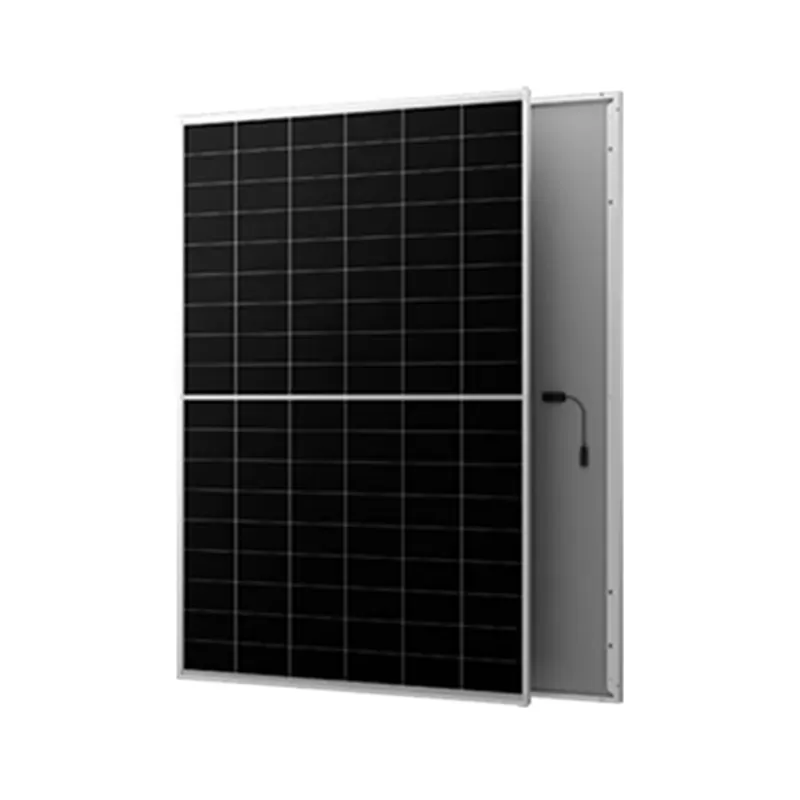Exploring the Benefits of Bifacial N-Type Mono Solar Panels for Enhanced Energy Efficiency
The Rise of Mono PERC Bifacial N-Type Solar Cells
In the rapidly evolving landscape of solar energy technology, mono PERC bifacial N-type solar cells have emerged as a groundbreaking advancement that promises higher efficiency and performance for solar power generation. This article explores the principles behind these cells, their unique advantages, and their potential impact on the solar energy market.
Understanding Mono PERC Bifacial N-Type Technology
Mono PERC (Passivated Emitter and Rear Cell) cells are a form of monocrystalline solar cells that utilize a specialized design to enhance their performance. The ‘mono’ aspect refers to the use of a single crystal structure, leading to improved light absorption and reduced electron recombination losses. PERC technology involves a passivation layer on the rear side of the cell, which reflects unabsorbed sunlight back into the solar cell, effectively increasing its efficiency.
Bifacial technology, on the other hand, allows solar cells to capture sunlight from both sides. This is particularly advantageous when the cells are installed in settings where albedo (the reflectivity of surfaces like snow, sand, or concrete) can boost the incident light that reaches the rear side of the panel. Hence, the combination of mono PERC and bifacial technology in N-type cells maximizes energy capture and conversion efficiency.
N-type cells are defined by their doping with phosphorus, which results in better performance and longevity compared to P-type cells. They exhibit reduced light-induced degradation (LID), making them more reliable over time. N-type cells can also achieve higher efficiencies, reaching over 24%, depending on the technology applied.
Advantages of Mono PERC Bifacial N-Type Cells
1. Higher Efficiency The inherent efficiency of mono PERC bifacial N-type cells can lead to more energy production from a smaller footprint. This is critical in urban areas where space is at a premium.
mono perc bifacial n type

2. Enhanced Yield from Light Reflection Bifacial cells can capture additional light from reflections off the ground or other surfaces, significantly improving energy yield—often by 10% to 30% compared to traditional monofacial cells.
3. Durability and Longevity N-type cells are known for their robust performance over time. They are less susceptible to degradation effects, ensuring a longer lifespan and less frequent need for replacement, which translates to lower lifecycle costs.
4. Versatility in Installation These solar cells can be installed in a variety of settings, including rooftops and solar farms, often increasing their effectiveness in diverse environments.
5. Environmental Sustainability By harnessing more energy with fewer resources, these technologies contribute to more sustainable energy practices, reducing reliance on fossil fuels and promoting clean energy solutions.
Market Impact and Future Prospects
As the world moves toward renewable energy solutions, mono PERC bifacial N-type solar cells are poised to play a pivotal role in the transition to sustainable energy. With ongoing advancements in manufacturing techniques and reductions in production costs, these technologies are becoming increasingly accessible.
The deployment of N-type bifacial panels is likely to expand in large-scale solar projects and residential installations, driven by the increasing demand for efficient energy solutions. Government policies and incentives aimed at promoting renewable energy sources will further bolster their adoption.
In conclusion, the integration of mono PERC bifacial N-type solar cells signifies a significant leap forward in solar technology. With their ability to improve efficiency and reliability while offering environmental benefits, they represent an essential component of the future energy landscape. As technologies advance and become more widespread, the potential for solar energy to address global energy needs sustainably will continue to grow. The solar revolution is not just on the horizon—it is manifesting now, powered by innovations like mono PERC bifacial N-type solar cells.
-
Unlocking Energy Freedom with the Off Grid Solar InverterNewsJun.06,2025
-
Unlock More Solar Power with a High-Efficiency Bifacial Solar PanelNewsJun.06,2025
-
Power Your Future with High-Efficiency Monocrystalline Solar PanelsNewsJun.06,2025
-
Next-Gen Solar Power Starts with Micro Solar InvertersNewsJun.06,2025
-
Harnessing Peak Efficiency with the On Grid Solar InverterNewsJun.06,2025
-
Discover Unmatched Efficiency with the Latest String Solar InverterNewsJun.06,2025







